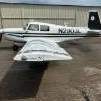Runway Opinions
-
Members Online
- jordanjms
- Ed de C.
- VetRepp
- PT20J
- Buckeyechuck
- Justin Schmidt
- 1967 427
- Will.iam
- takair
- 231LV
- hammdo
- hubcap
- jamesyql
- KASE
- thomas1142
- Fly Boomer
- LANCECASPER
- BDPetersen
- exM20K
- johnnyr172
- shawnd
- kortopates
- jlunseth
- eman1200
- UteM20F
- Marc_B
- MattD89
- FlightSmith
- Blaze
- Gilt
- TCC
- Dwb62
- Bolter
- Ragsf15e
- Steve Hughes
- KLRDMD
- glbtrottr
- ohdub


Recommended Posts
Join the conversation
You can post now and register later. If you have an account, sign in now to post with your account.